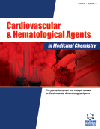
Full text loading...
We use cookies to track usage and preferences.I Understand
Type 2 diabetes is characterized by elevated blood glucose levels, leading to an increased risk of cardiovascular diseases. Sodium butyrate, the sodium salt of the short-chain fatty acid butyric acid produced by gut microbiota fermentation, has shown promising effects on metabolic diseases, including type 2 diabetes and cardiovascular diseases. Sodium butyrate demonstrates anti-inflammatory, anti-oxidative, and lipid-lowering properties and can improve insulin sensitivity and reduce hepatic steatosis. In this review, we investigate how sodium butyrate influences cardiovascular complications of type 2 diabetes, including atherosclerosis (AS), heart failure (HF), hypertension, and angiogenesis. Moreover, we explore the pathophysiology of cardiovascular disease in type 2 diabetes, focusing on hyperglycemia, oxidative stress, inflammation, and genetic factors playing crucial roles. The review suggests that sodium butyrate can be a potential preventive and therapeutic agent for cardiovascular complications in individuals with type 2 diabetes.

Article metrics loading...

Full text loading...
References


